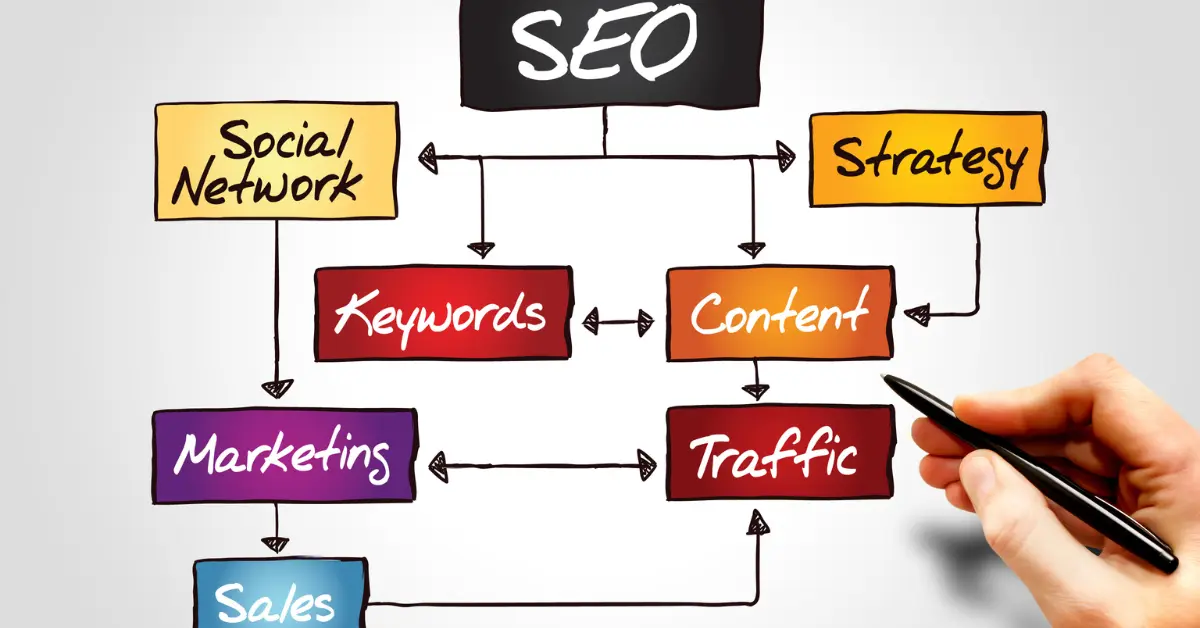In today’s digital age, having a solid online presence is essential for the success of any business. This is where digital marketing comes into play. It involves using various digital channels such as social media, email, search engines, and websites to promote products or services and connect with potential customers.
However, with the ever-evolving digital landscape, developing an effective and efficient digital marketing plan can be daunting. A well-planned and executed digital strategy can significantly benefit your business, including increased brand awareness, customer engagement, and higher conversion rates.
5 Strategies to Develop a Digital Marketing Plan
This blog post will guide you through developing a digital marketing plan to help you achieve your business goals. From identifying your target audience to creating compelling content, we will cover all the necessary steps to create a successful digital marketing plan.
Step 1: Set Your Goals and Objectives
The first step in developing a digital marketing plan is clearly defining your goals and objectives. Creating a strategic plan that will bring tangible results will be challenging without a clear direction.
Start by asking yourself what you want to achieve with your digital marketing efforts. Is it to increase sales, generate leads, or improve brand awareness? Whatever your goals, ensure they are specific, measurable, attainable, relevant, and time-bound.
For example, instead of saying “increase sales,” a specific and measurable goal would be “increase online sales by 20% in the next quarter.” This will help you track your progress and make necessary adjustments to your strategy if needed.

Step 2: Identify Your Target Audience
Knowing your target audience is crucial for any marketing strategy, and digital marketing is no exception. Understanding your audience’s demographics, interests, behaviours, pain points, and preferences will help you create content and campaigns that resonate with them.
To identify your target audience, conduct thorough research using available data and tools such as Google Analytics or social media insights. You can also conduct surveys or customer interviews to gather more insights.
Step 3: Choose Your Digital Marketing Channels
There are numerous digital marketing channels to choose from, and it can be overwhelming to determine which ones are best for your business. Remember, not all channels will work for your target audience or align with your goals and objectives.
Select the channels your target audience will most likely use based on your research. For example, if your target audience is primarily active on Instagram, focus on creating engaging content for that platform. It is also essential to consider your budget and resources when selecting channels.

Step 4: Develop Compelling Content
Content is the cornerstone of any marketing strategy. It drives people to engage with your brand and makes them take action. Your content should be informative, relevant, and visually appealing to capture the attention of your target audience.
To create compelling content, ensure it is tailored to each digital marketing channel. For instance, while visuals work best on Instagram and Pinterest, longer-form content suits platforms like LinkedIn and your website’s blog section.
Step 5: Implement SEO Strategies
Search engine optimization (SEO) is crucial for boosting your online visibility and attracting organic traffic to your website. Start by optimizing your website with relevant keywords and creating high-quality backlinks.
Look for opportunities to optimize your content on each digital marketing channel. For example, use hashtags on social media and include keywords in your YouTube video titles and descriptions.

Conclusion
Developing a marketing plan can seem overwhelming, but following the steps outlined above can create a solid and effective strategy for your business. Remember to have clear goals, understand your target audience, choose the proper channels, and create compelling content. Regularly reviewing and updating your plan will help you stay on track and achieve your business objectives. With a well-planned and executed digital marketing strategy, you can take your business to new heights in the digital world.
FAQs:
Q: How long does it take to see results from a digital marketing plan?
A: It depends on various factors, such as your goals, target audience, budget, and the channels you are using. Generally, seeing noticeable results from a digital marketing plan takes at least 3-6 months.
Q: How often should I review and update my digital marketing plan?
A: You should review and update your digital marketing plan at least once a quarter to ensure it aligns with your business goals and target audience’s behaviour.
Q: How much should I budget for digital marketing?
A: The amount you budget for digital marketing depends on your business goals, target audience, and the channels you are using. Having a realistic budget and allocating the funds wisely is essential to get the best ROI.
Q: Should I outsource my digital marketing or hire an in-house team?
A: It depends on your budget, resources, and expertise. While outsourcing may be more cost-effective for smaller businesses with limited resources, larger companies may benefit from having an in-house team that can focus on their specific needs and goals.
Q: How do I measure the success of my digital marketing plan?
A: You can measure the success of your digital marketing plan by tracking key performance indicators (KPIs) such as website traffic, social media followers, engagement rates, and conversion rates. Set specific goals for each KPI and regularly review and analyze the data to make necessary improvements.